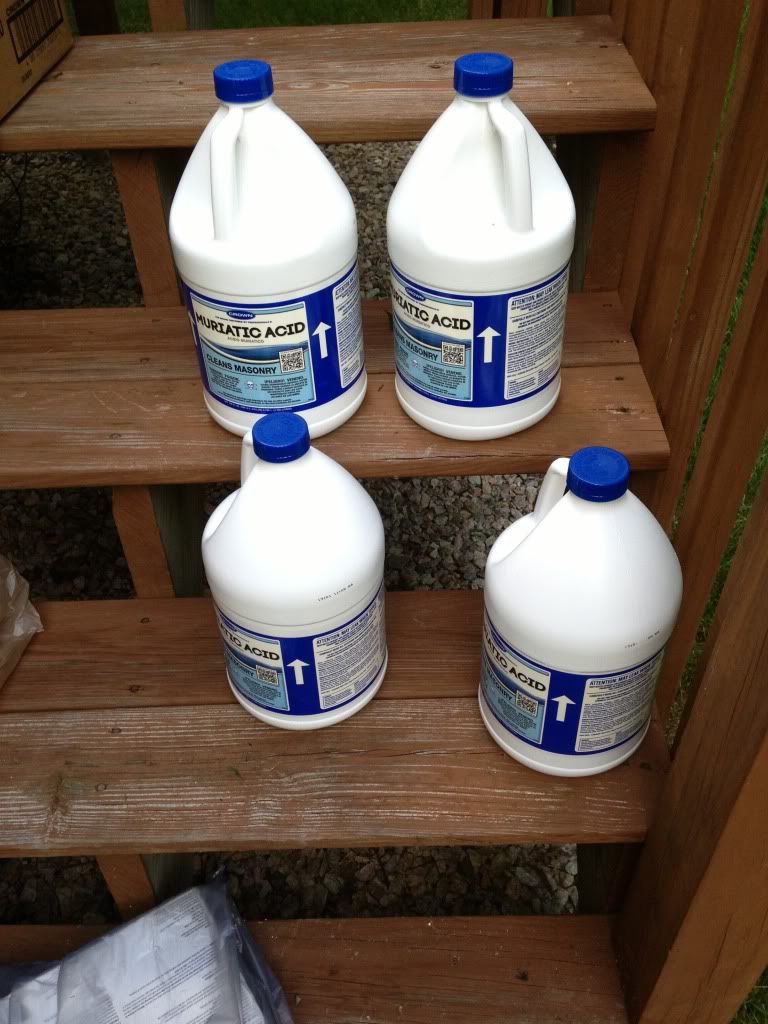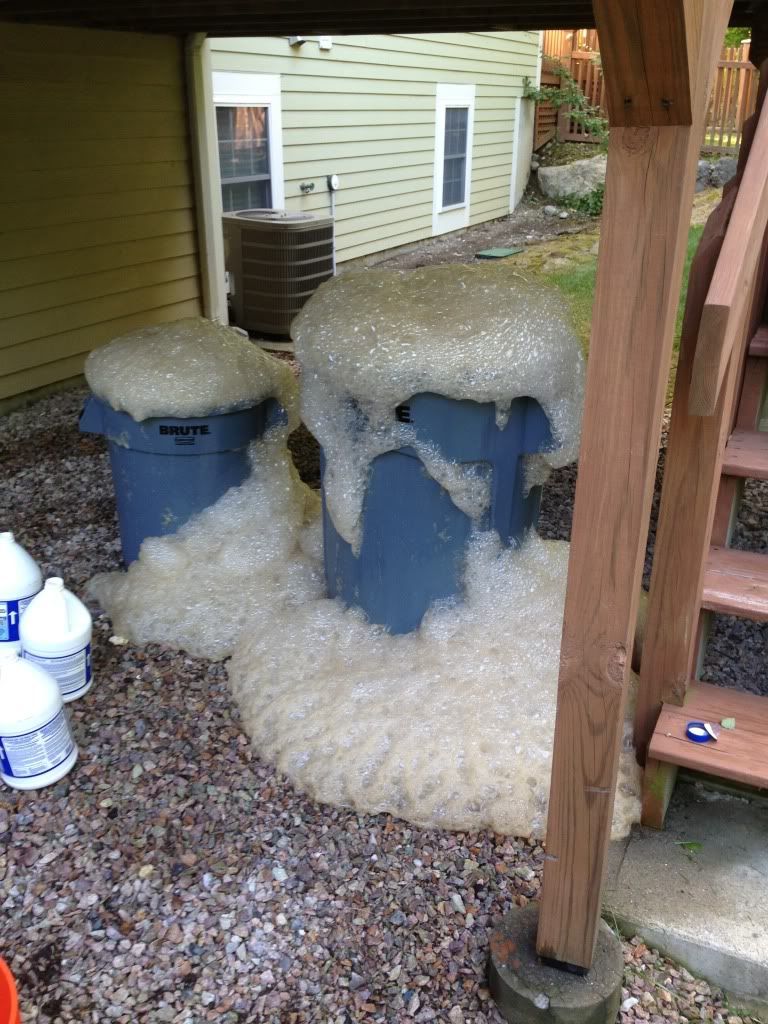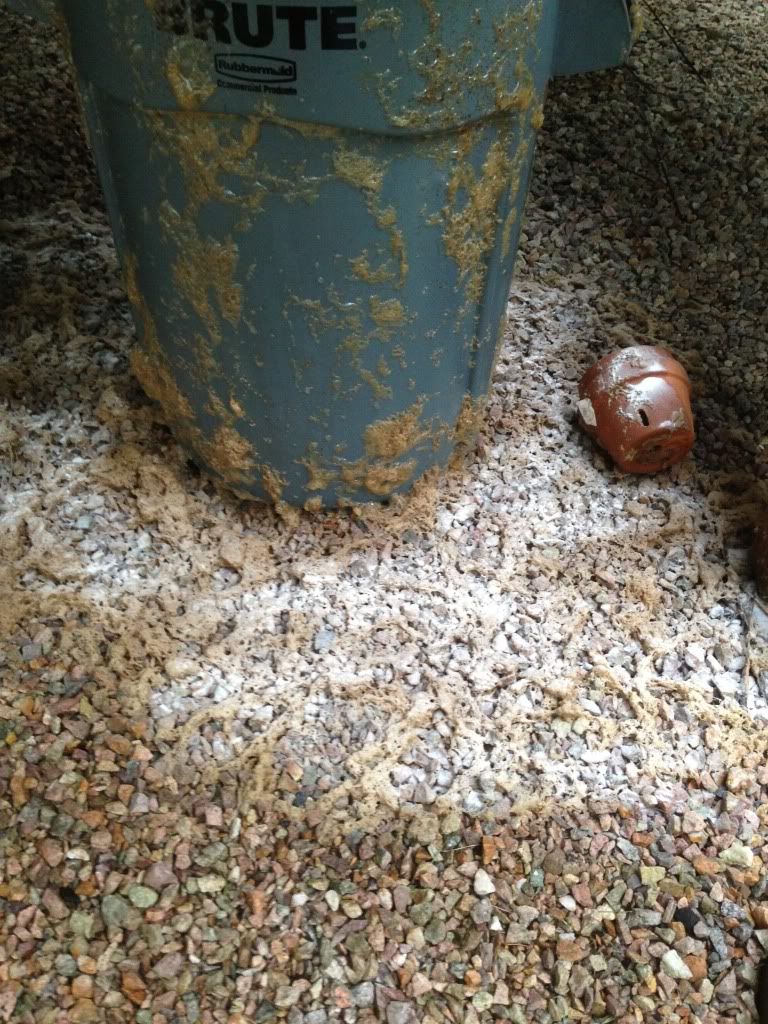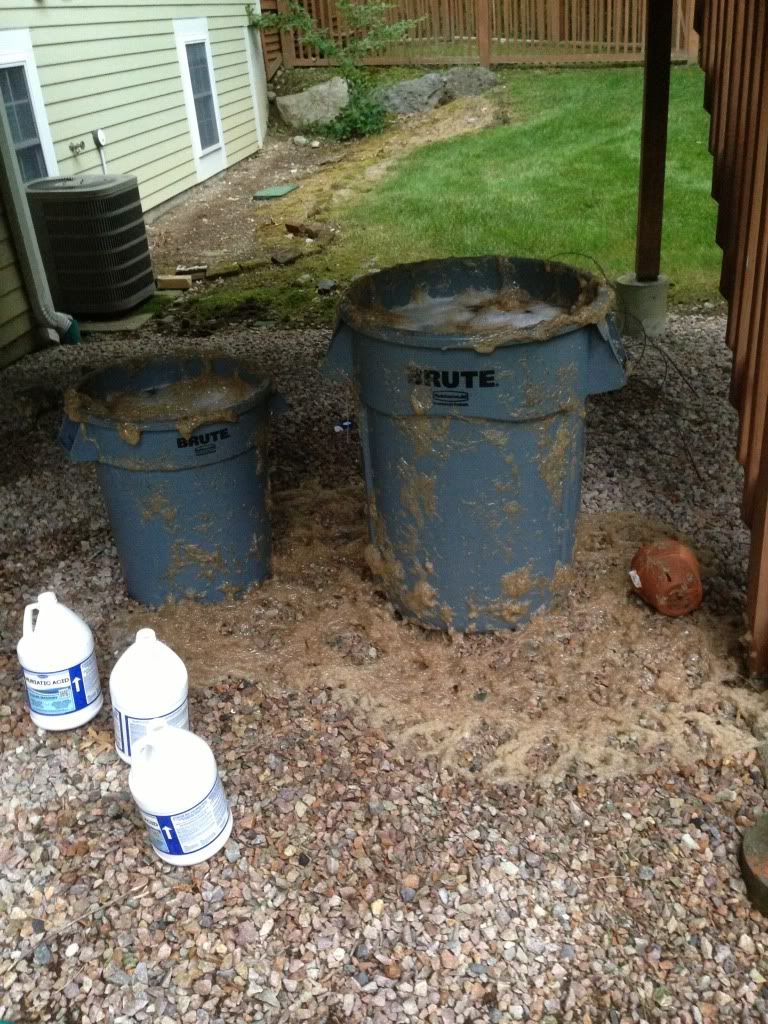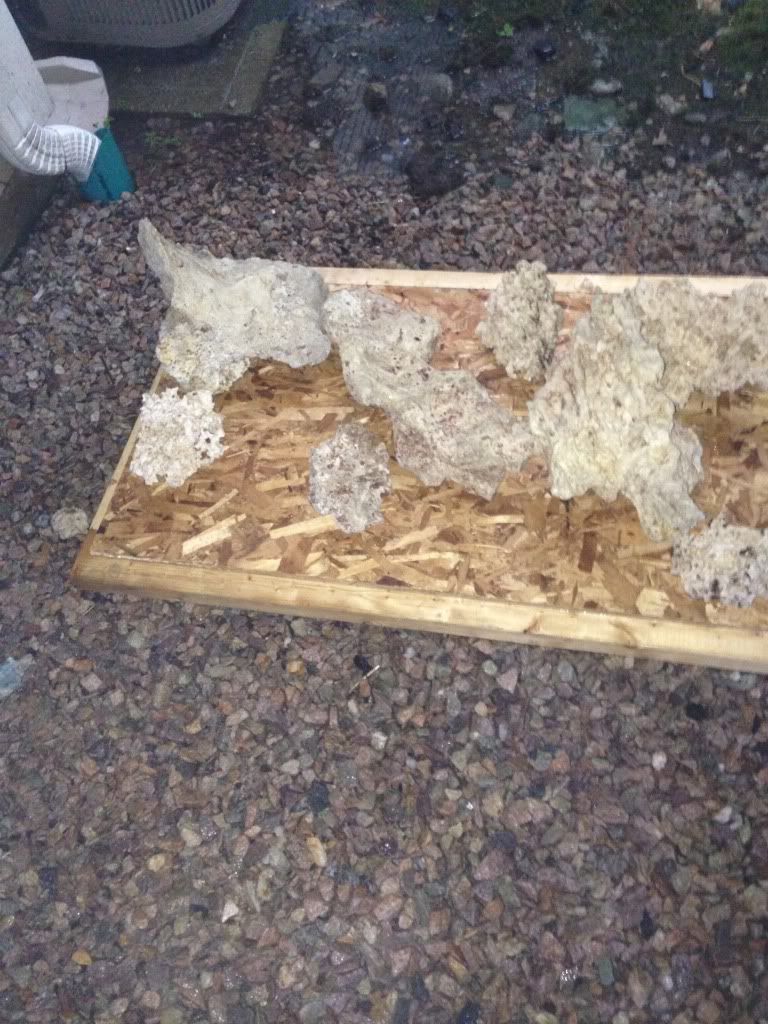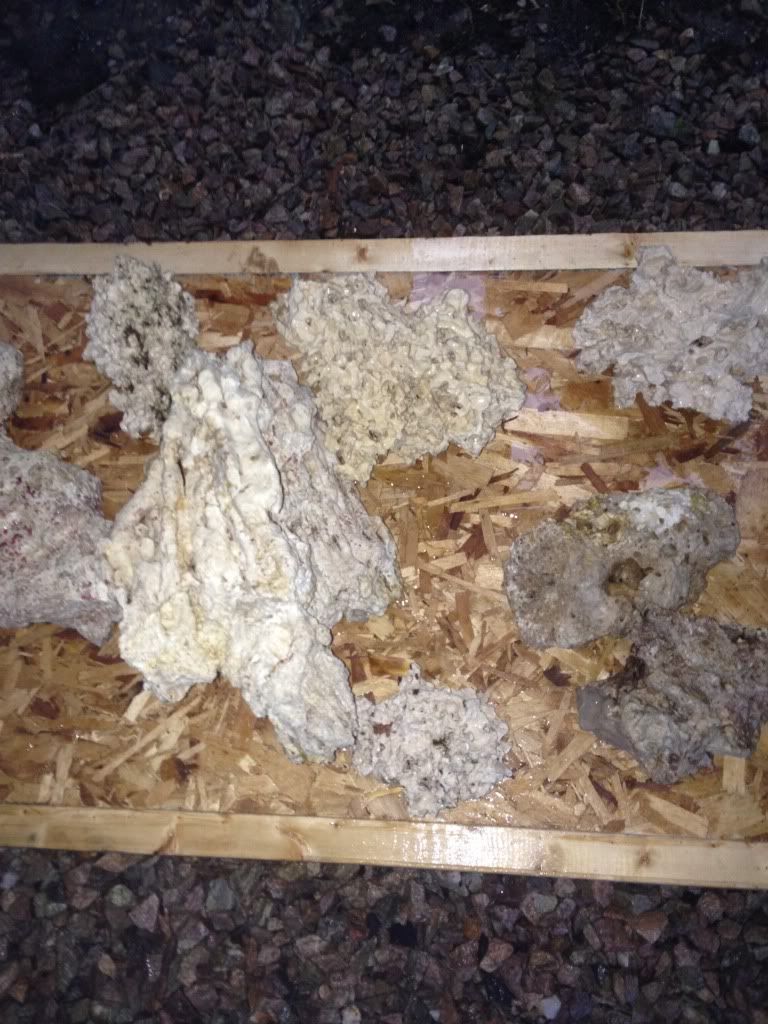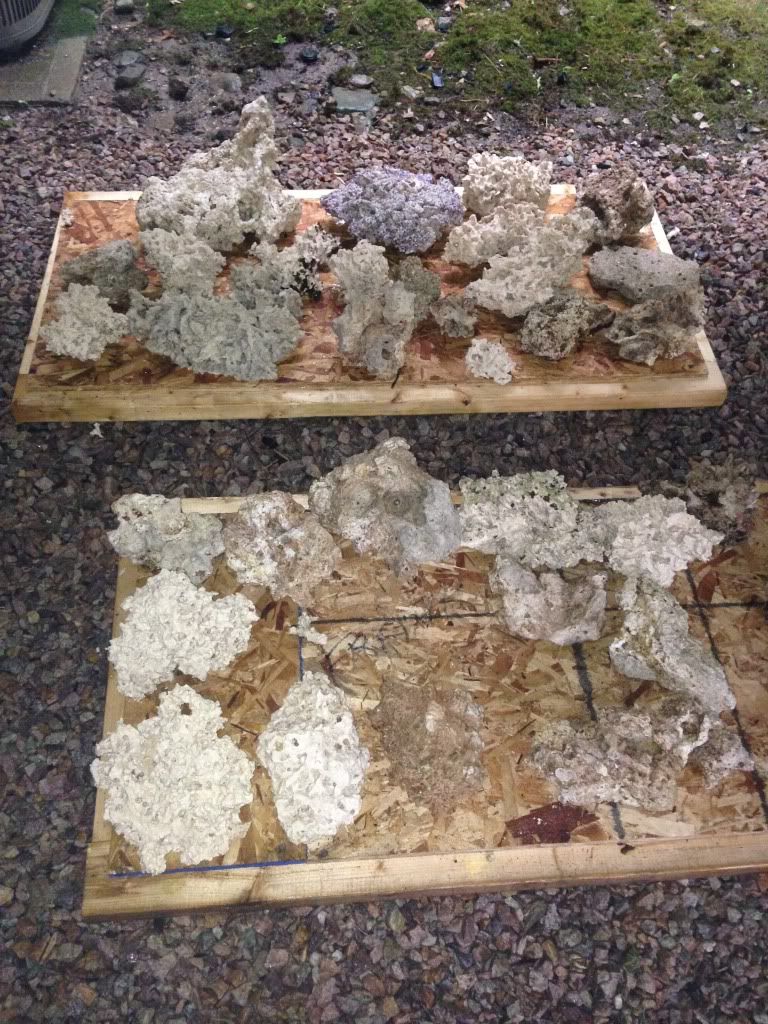The other day I picked up 292 pounds of rock from a fellow reefers tank. He said his maintenance had slipped and the rock could use a good cleaning. So I bought the rock with the thought of cleaning it using the muriatic acid “method” and I thought I would share my experience with you all.
Disclaimer – This is an “acid bath” and is not to be taken lightly. I will highlight what I did but if you decide to try this yourself please do your own research as there are many threads out there with way better explanations than I will provide here. Please, Please read up on this and be very careful!!!
Quick Overview: Muriatic acid mixed with water turns into hydrochloric acid and this will eat away the top, crap infested layer of our live rock thus giving it a clean “rebirth”. I’ll use a 30% concentration muriatic acid at a 10:1 gallon ratio with water. I’ll also use baking soda to neutralize the acid once the reaction stops. And then a final rinse to wash away all the nasty stuff.
Step 1: SAFETY……..SAFETY……..SAFETY
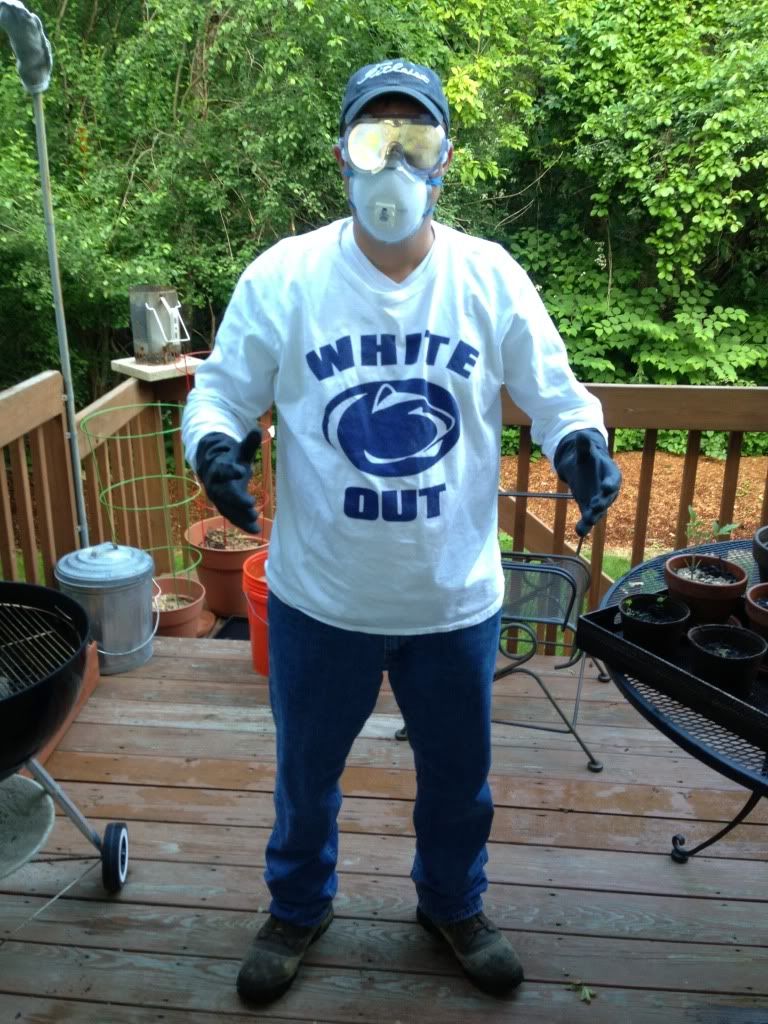
Gloves…..eye protection and a respirator are a must – this stuff smoke when the bottle is opened!
Next is the rock pile:
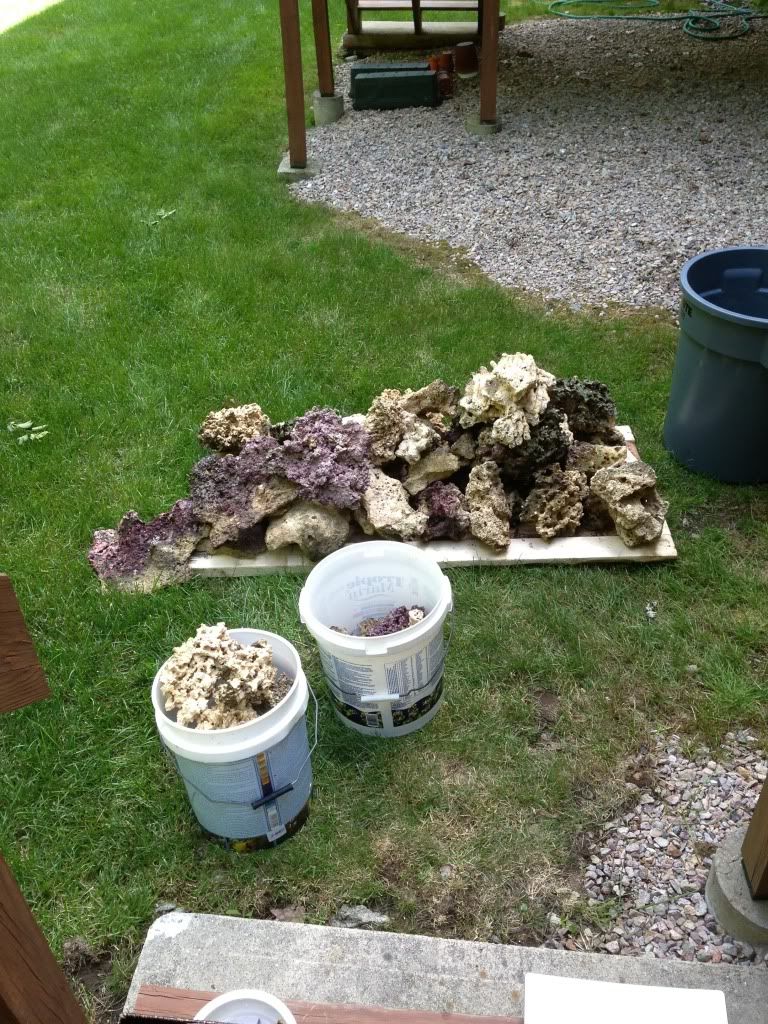
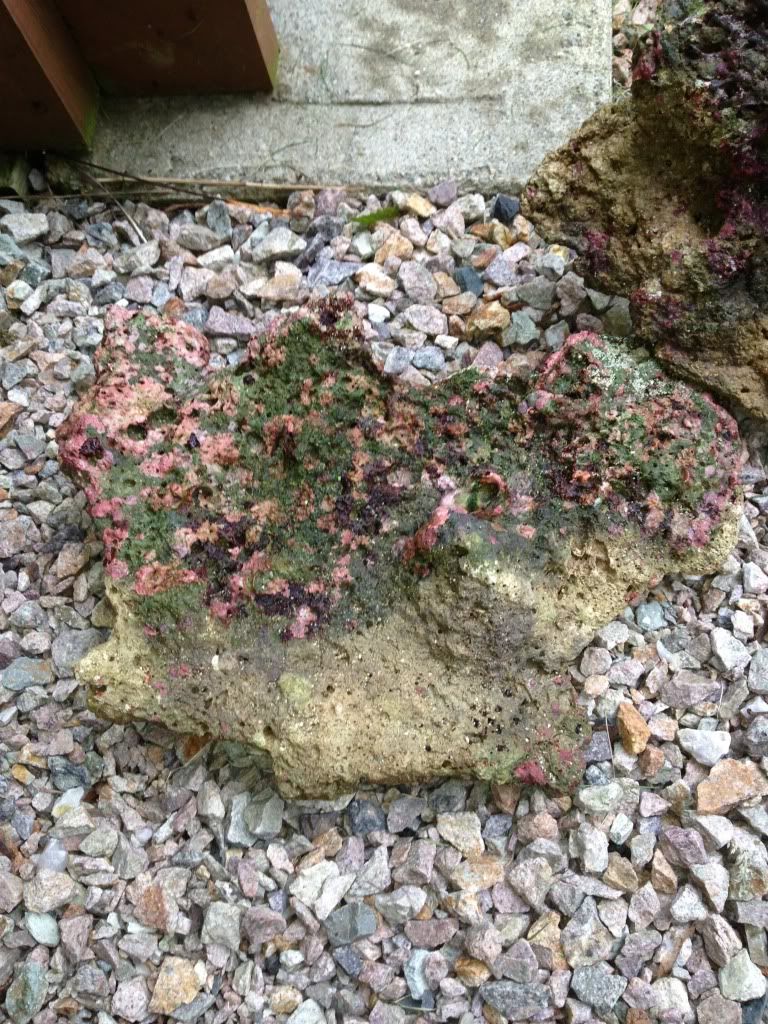
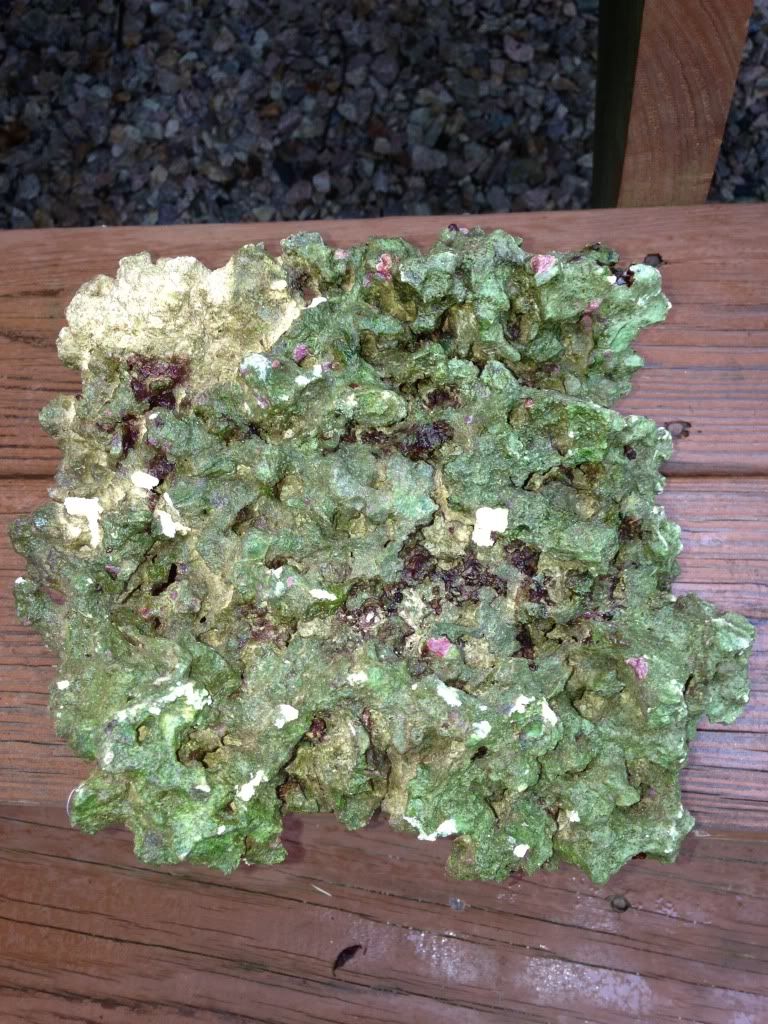
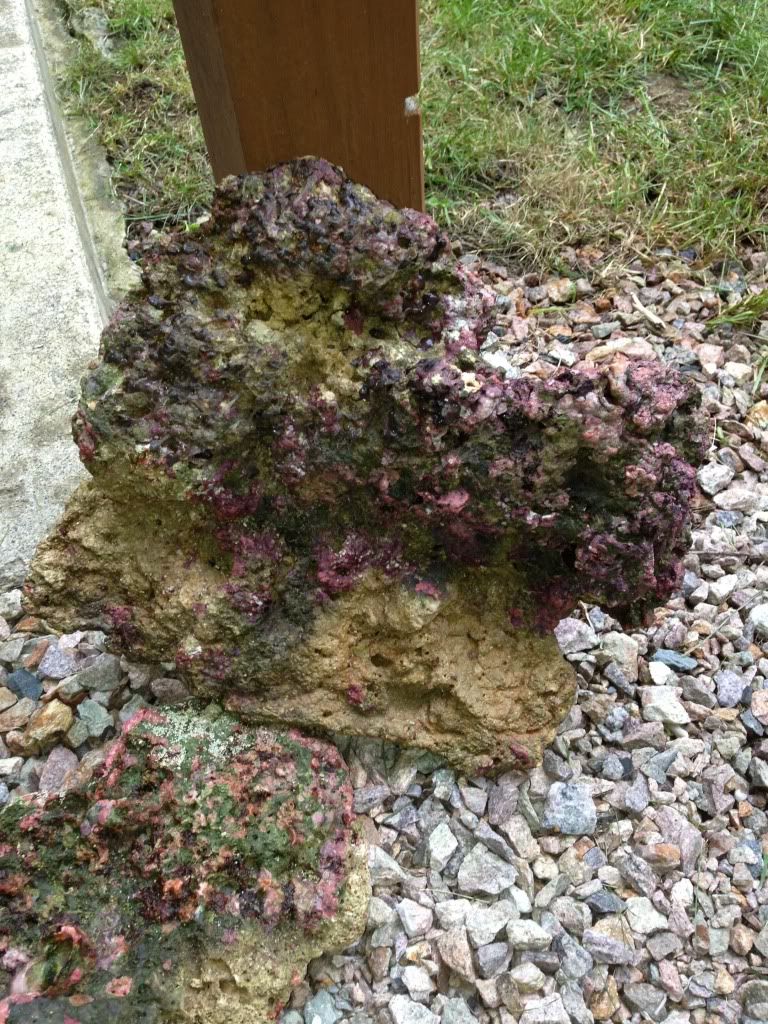
Disclaimer – This is an “acid bath” and is not to be taken lightly. I will highlight what I did but if you decide to try this yourself please do your own research as there are many threads out there with way better explanations than I will provide here. Please, Please read up on this and be very careful!!!
Quick Overview: Muriatic acid mixed with water turns into hydrochloric acid and this will eat away the top, crap infested layer of our live rock thus giving it a clean “rebirth”. I’ll use a 30% concentration muriatic acid at a 10:1 gallon ratio with water. I’ll also use baking soda to neutralize the acid once the reaction stops. And then a final rinse to wash away all the nasty stuff.
Step 1: SAFETY……..SAFETY……..SAFETY

Gloves…..eye protection and a respirator are a must – this stuff smoke when the bottle is opened!
Next is the rock pile:





